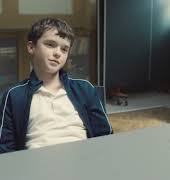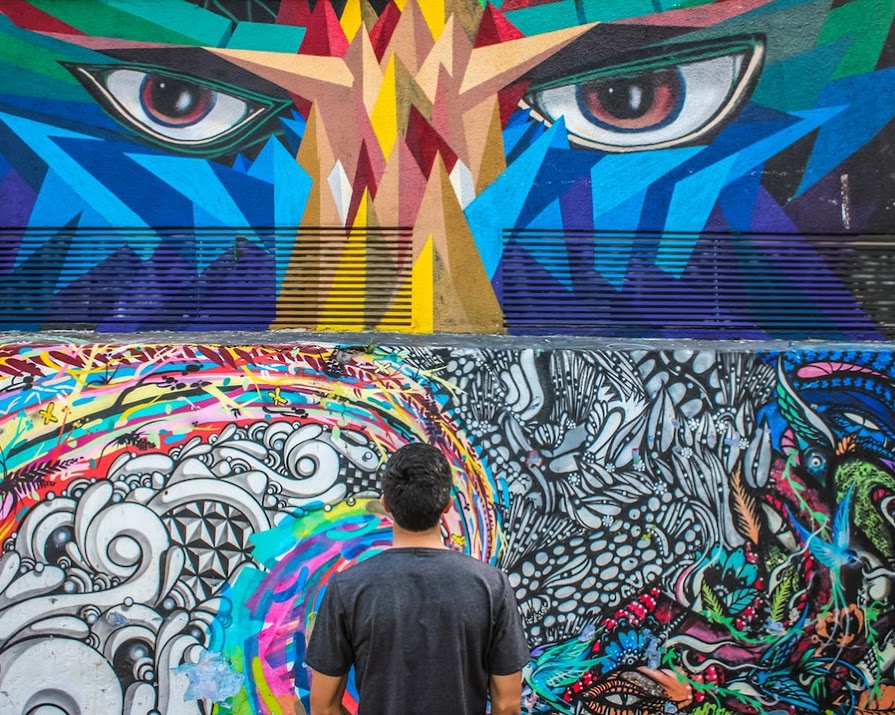
By Erin Lindsay
20th May 2018
20th May 2018
Art or defacement? Street art or graffiti? Whatever your opinion, there’s no doubt you’ll have seen far more colour on our streets these past few years. There has been an explosion of street art onto Irish cityscapes recently, with prolific street artists and collectives like Maser and Subset now being household names. As murals of celebrities and pop culture icons take over our streets, it seems that this new burst of colour comes much to the delight of everyone – well, almost everyone.
City councils have been the biggest dampeners of the Irish street art revolution, with Dublin City Council hitting the headlines again this week with their forced removal of a mural on the wall of well-loved vintage mecca Siopaella in Temple Bar. The mural displayed two of our best-loved Irish icons – Michael D. Higgins, our current President, and Mrs Doyle, the tea-loving housekeeper from iconic TV show Father Ted. The mural had layers of meaning – the images of Michael D. Higgins and Mrs Doyle seemed to convey everything good about being Irish, through the art and creativity that we as a nation have come to be famous for. How disappointing, then, that this artwork was taken down by Ireland’s other great love – bureaucracy.
?taken-by=siopaellaAs we edge closer to next week’s contentious referendum to repeal the 8th amendment, the controversial Repeal mural comes to mind too. Prominent Dublin street artist Maser first created the painting in Temple Bar in 2016, only to have it taken down a month later in order to comply with planning rules. As the referendum date was announced, the mural appeared again on April 9th of this year in its old spot. Its host, the Projects Arts Centre, argued that the mural did not need planning permission, as ads for elections and referenda are exempt from planning permission, as long as they are removed within 7 days of the referendum having taken place. But that was not enough to convince Dublin City Council, and the Project Arts Centre was again forced to remove the art so as not to risk their charitable status. This time, however, not all of the artwork was removed. A small corner of the mural remained, a reminder of the piece that lay beneath the paint job.
?taken-by=projectartscentreIt was clear that the Project Arts Centre themselves were not too taken with the crop’s decision. At the public removal of the mural, artistic director Cian O’Brien called the action “defiant compliance” and said: “Through its access, this political artwork lives on in the thousands of people who have taken its heart into theirs. You can paint over a mural but you can’t paint over an issue.”
Street art around the country and especially in Dublin has breathed fresh life into our grey city streets, with support flooding in for the murals from all directions. The appearances of Subset’s murals of visiting musicians have both surprised and delighted those they depict. Stormzy posted a picture of himself standing in front of his Smithfield mural when he came to Dublin for his performance in March last year, and Kendrick Lamar mentioned how happy he was at his artwork on Aungier Street at his 3arena gig in February. Why then, are the powers that be so keen to remove these artworks as soon as they crop up?
?taken-by=stormzyofficialThe simple answer? It’s the law. But what if the law doesn’t work? It was reported in 2017 that Dublin City Council spends over €1 million on graffiti removal every year in an effort to clamp down on tagging and street art. But these murals keep cropping up, and worse still, graffiti (as opposed to street art) still plagues Dublin city centre.
The street artists themselves have raised their voices against the City Council’s restrictive laws. In their manifesto, street art collective Subset stated that:
“the system which governs the production of large format artwork within the outdoor realm is unnecessarily complex, arduous and, we believe, prohibitive to the cultivation, evolution and progression of public art culture.
We believe the reform of, or amendment to, the aforementioned system is required in order to enable the progression and elevation of this outlet of self-expression.”
However, the laws stay in place, and Subset have been forced to take the approach of illegal artwork, to, in their words, “raise public awareness” about the importance of street art. When asked about their alternatives to the current laws surrounding graffiti, Subset said: “We have submitted a public art framework to both Dublin City Council and Ministers for the government outlining how we believe the production of large format artwork should be governed with the public domain. We are awaiting a response.”
And so, the fight for artistic rights goes on. There’s no doubt that there is a local hunger for street art in public spaces around Dublin, and many hope for new legislation whereby street art can be commissioned and constructed without the fear of being imminently removed. Until then, what’s driving Subset to keep going?
“Freedom of expression,” they said.























